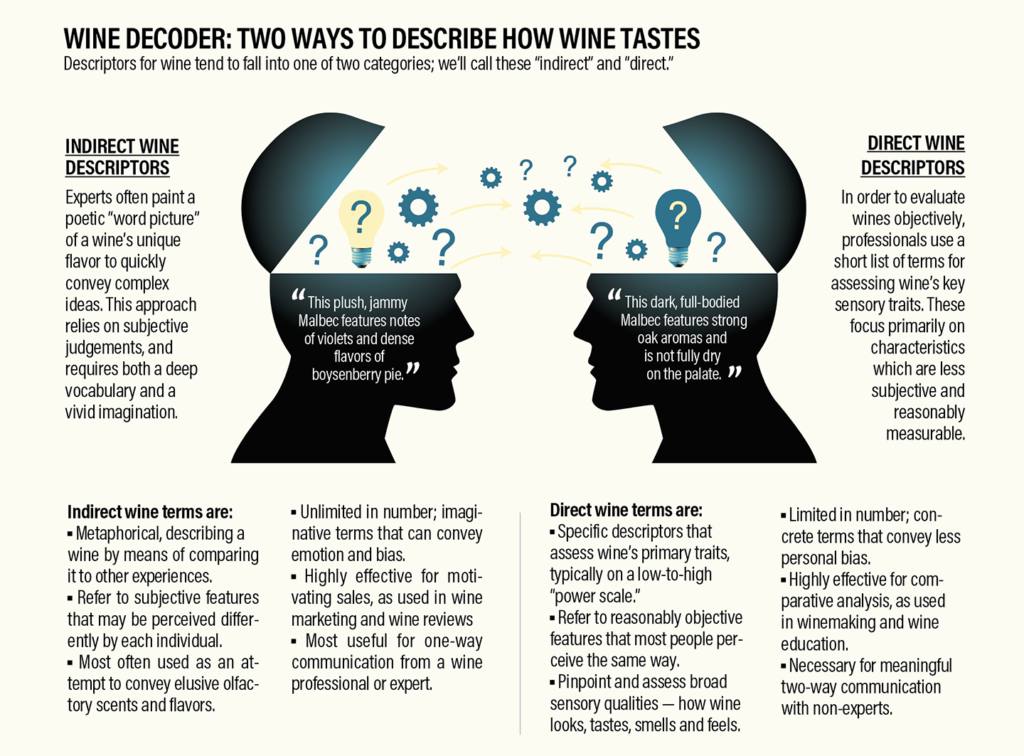To enjoy a glass of wine requires no training, but to communicate about it effectively, we need the right words.
Most of wine’s sensory qualities are in the dimensions of how it tastes, smells and feels in the mouth. Sadly, there are far fewer terms for flavors, scents, and tactile sensations than there are for sights and sounds. To fill this gap, the wine profession has developed specialized terminology known as “descriptors” to help distinguish and define specific wine characteristics.
Before delving into a study of descriptors though, it’s helpful to take a step back and notice a consistent pattern in how professionals use them. There are two distinct types which are typically used for different purposes due to their strengths and weaknesses. Learning to use each type appropriately can go a long way toward turning a wine novice into a wine expert.

Photo by Scott Warman on Unsplash.
Marnie Old is one of the country’s leading wine educators. Formerly the director of wine studies for Manhattan’s French Culinary Institute, she is best known for her visually engaging books published by DK – such as Wine: A Tasting Course. Marnie currently serves as director of vinlightenment for Boisset Collection. Listen to her recent podcast, Wine Needs to Recalibrate, and read her recent piece, New to Wine? Study France First!




